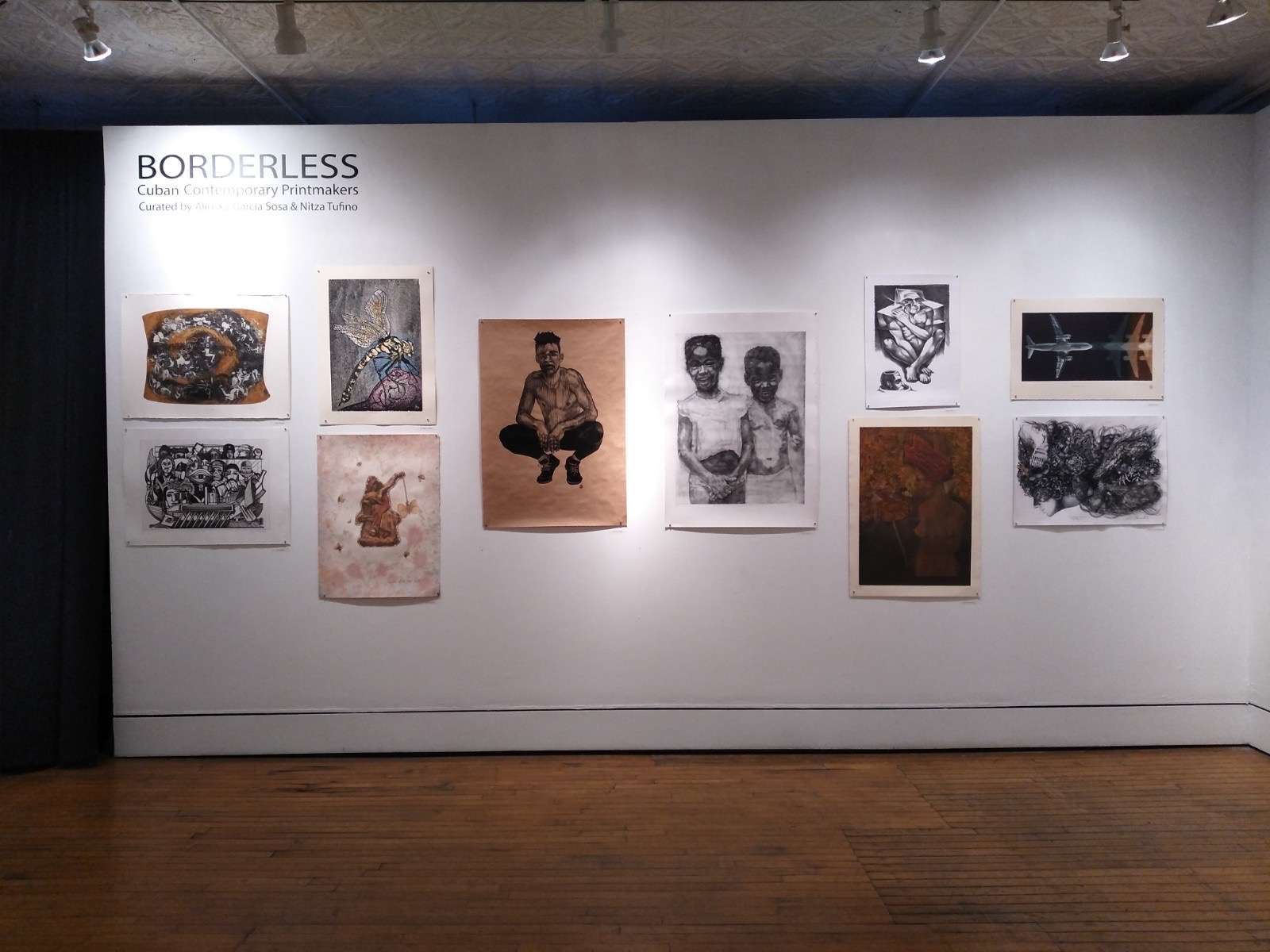“…the truth, whose mother is history, emulator of time, deposit of actions, witness of the past, example and warning of the present, warning of the future”.
Pierre Menard
Throughout time, Cuban art has demonstrated its fecundity and transcendence. So much so that for more than 30 years one of the most important biennials in the world has been taking place on the island: The Havana Biennial. To this is added the vast production carried out by Cuban artists from the diaspora. In other words, as a kind of centrifugal force, Cuban artistic production is consolidated and expanded beyond the seas.
An example of this is the collective exhibition of contemporary Cuban engraving “Borderless” (Without borders), which takes place in the renowned Boricua workshop In New York. The exhibition will be available until January 6, 2023. Under the curatorship of Aliosky García Sosa and Nitza Tufiño, coordinators and managers of the proposal, the public will find in it a wide and varied panorama of island engraving from the last decade.
At this point it is important to refer to the physical space where the works are exhibited. We are referring to an institution located in Upper Manhattan, exactly in East Harlem (El Barrio), which has been founded for 53 years and is recognized for its cultural empowerment. The Puerto Rican Workshop Today it is a multidisciplinary organization that holds exhibitions, educational talks, engraving workshops, among others, and the only one from an artistic-educational point of view that provides services to El Barrio, exalting and enriching the holistic and creative vision of artists. Latinos from New York with the community in that area.
The Workshop also works as a connecting center for artistic production in the Puerto Rican diaspora and, on this occasion, it is the first time that it has held a show with Cuban artists. In this sense, the commendable work carried out by its curators, García and Tufiño, artists and friends who put all their effort and intellectual capacity into the experience, was crucial.
We are talking about an exhibition that includes around 70 engravers. There are pieces by artists who live in Cuba, but also in other parts of the world. Undoubtedly, it was an arduous task to collect them and finally reach this destination.
Aliosky García Sosa (Cuba, 1979) is known for his work as an engraver, but also for his meritorious academic career that began at the University of the Arts (ISA, Havana) and for his teaching and work as head of the Department of Engraving at said college. He recently completed his Master’s studies in “Cultural Management and Administration” at the University of Puerto Rico.
Nitza Tufiño (Mexico, 1949) comes from a long artistic career that includes work as a muralist and engraver. She is also recognized for being the first woman artist and co-founder of the Neighborhood Workshopfor being a curator, as well as for the many awards she has received throughout her life (for example, the New York City Council Award for “Excellence in the Arts” by the President of the Council ).
Then, under their experiences and lucid gazes, both established and new engravers gathered in this exhibition. And that is precisely one of the riches of the curatorship: the generational and thematic diversity that the exhibition implies. We are talking about a visuality that is nourished by different points of view and that is free of censorship or schemes. In the words of Garcia Sosa:
Without making any distinction, Cuban artists residing both inside and outside the island are included in this exhibition in a sort of way to unite these medium growers in the same space. Here it is about breaking down barriers, overcoming obstacles, mocking differences of all kinds, creating bridges, strengthening ties…
From this base, the exhibition erects aesthetic discourses that allude to lifestyle, happiness, love, stigmatized ideas, the uncertain present or the longed-for future. The techniques used also enjoyed a visual polyphony: xylography, chalcography, lithography, serigraphy, collography, among others. That being said, let’s do a brief analysis of some of the works that “Borderless” brings together.
The one from Hanoi Pérez, (“Maternidad”, Lithography, 2014) places us before the indisputable Cuban nation and the feeling of belonging and respect for the mother country. Nothing more erotic than a female body with hints of nude. From this base, Pérez delves into motherhood, respect, human life, nationality, but also love. With her engraving (which uses different techniques) Hanoi has meritoriously inserted itself into contemporary Cuban graphics.
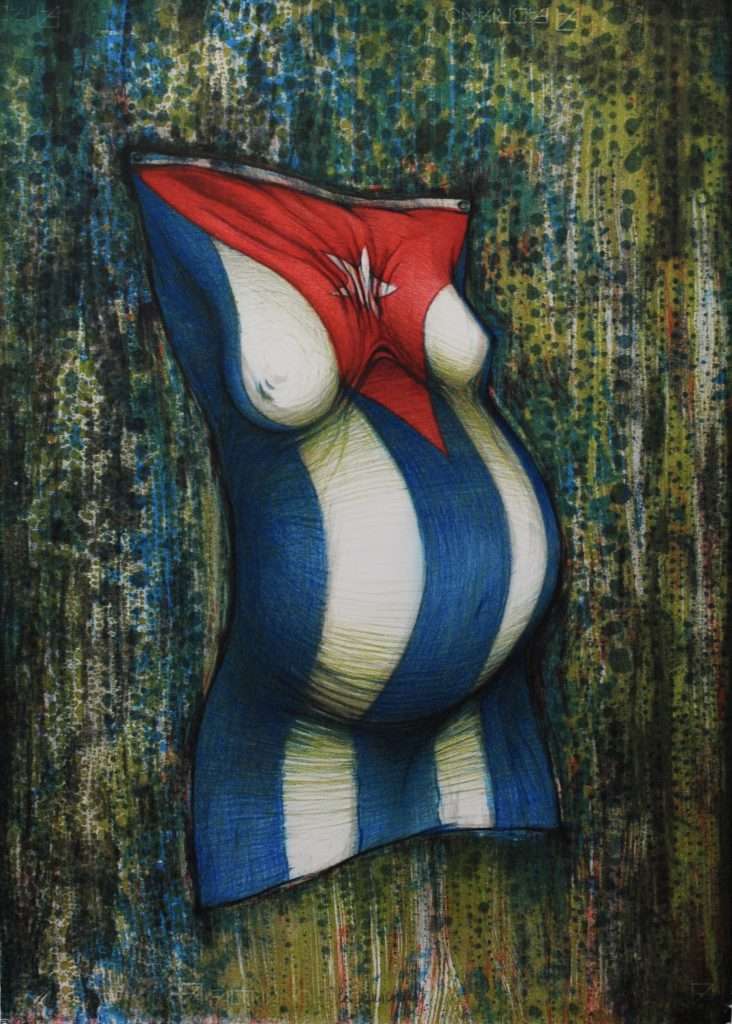
On the other hand, the aesthetic and conceptual discourse in the work of Aliosky García is based on self-referentiality, his introspection and the analysis of his environment. It is a work that prefers the silence of the night, the elusive gaze, the tree or nature as a refuge. The human being appears as an individual responsible for his actions, but also as an entity that judges and condemns his own actions and those of others. The story is minimalist and reflective, (with) moving and restless human consciousness. All of that is, without a doubt, “Your own heaven”.
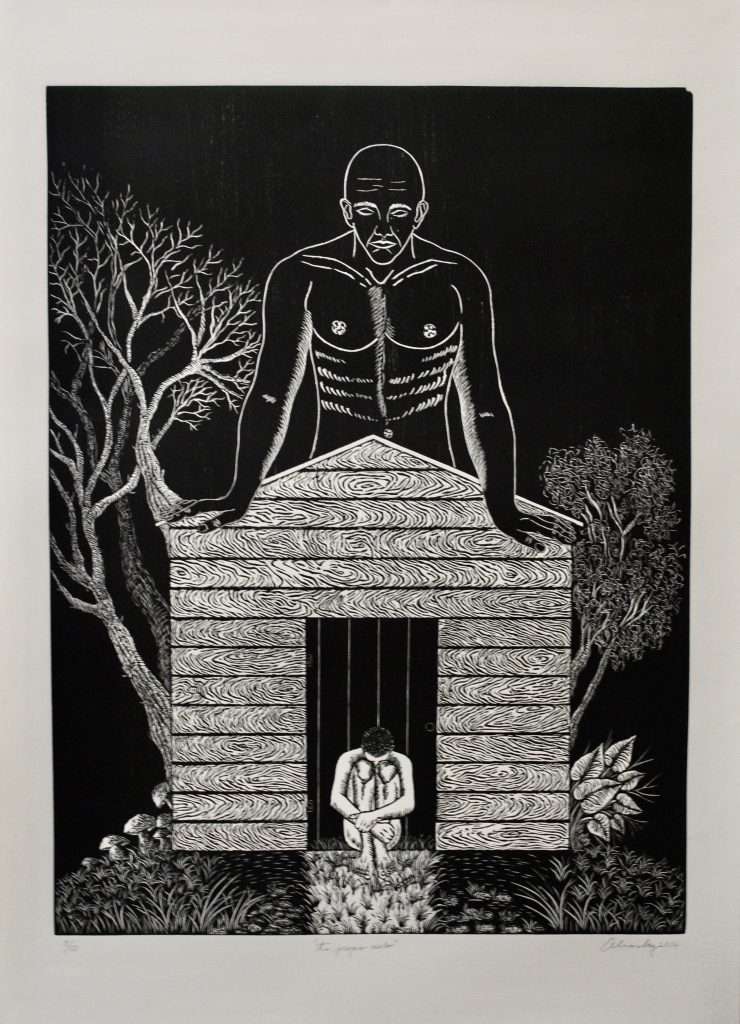
As far as the color palette is concerned, it is indisputable not to notice the presence of Sosabravo in “Músicos” (2020). On this occasion, the renowned artist, patriarch of the island’s visual arts, gives us the joy typical of Cuban culture. Through one of our strongest traditions, music, our artist exposes that party that means being alive.
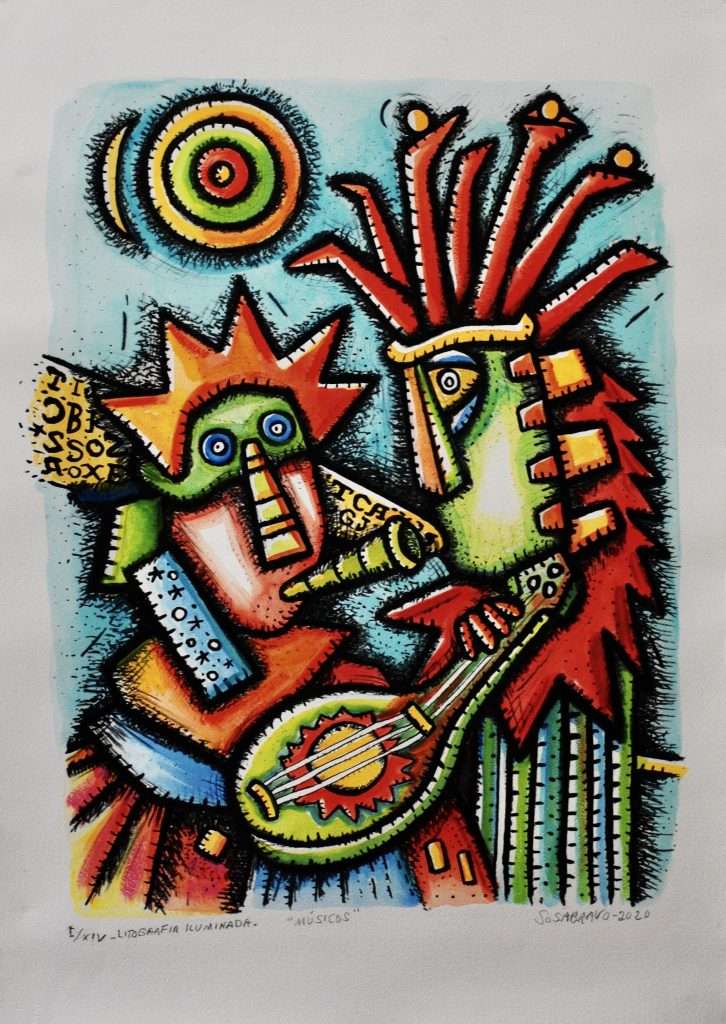
While, Raphael Zarza takes us by the hand to the roots of the Native American Sioux tribes, precisely to Tatanka Iyotanka (Sitting Bull), who was known to be the last great Sioux chief. This man was a defender of the rights of his people. So, the bull, as a constant fetish in Zarza’s work, is empowered with this double meaning. In his visual discourse, the story is always the center of attention.
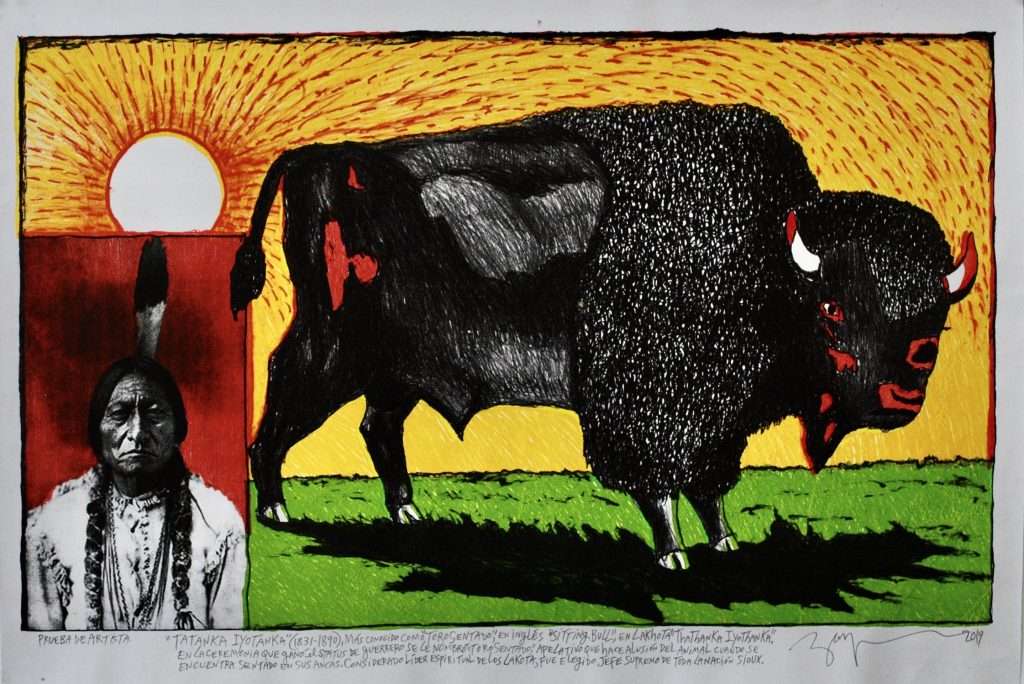
For its part, the work of Israel Naranjo (“Exercise to find the impression of the sun”, 2015, drypoint on chrome paper) is explicit innocence: children as the direct voice of happiness, play and friendship. From an impeccable technique, Naranjo defines each anatomical element and the overflowing joy in its protagonists. His pieces are characterized by working with the human body, so we are talking about an artist who shows extreme mastery when it comes to figurative engraving.
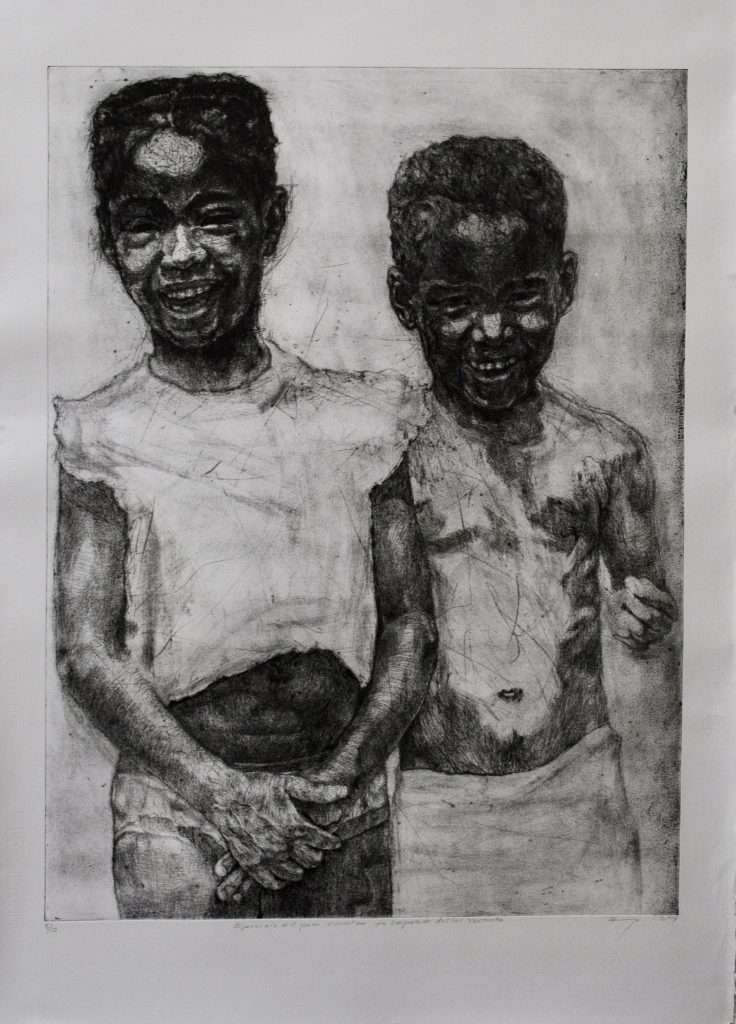
With “Borderless” we witness an exhibition rich in visuality and discourse. It is the voice of Cuban engraving, but also of Cuban art in a general sense and of its ability, like all good art, to penetrate any territory and make itself felt through its authenticity. Given the large list that gathered there, the only thing left to do is to exhort them to live this experience personally. Let’s not say more: Cuban engraving awaits you!

